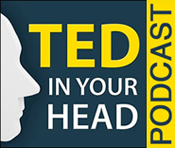How I Became a Hypnotherapist and What is Hypnosis? Episode P448
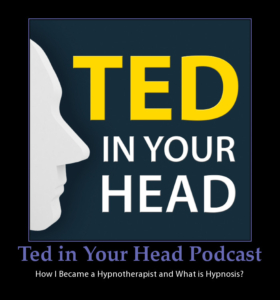
After 20 years in private practice as a hypnotherapist, Ted reflects on his journey and what it took for him to find his path. Ted also discusses the truth about what hypnosis really is, and what a typical session with a client looks like.
Listen to this podcast episode now:
I have attached a diagram, (courtesy of the Hypnosis Motivation Institute) this is what I use with every new client to explain how hypnosis and hypnotherapy works.
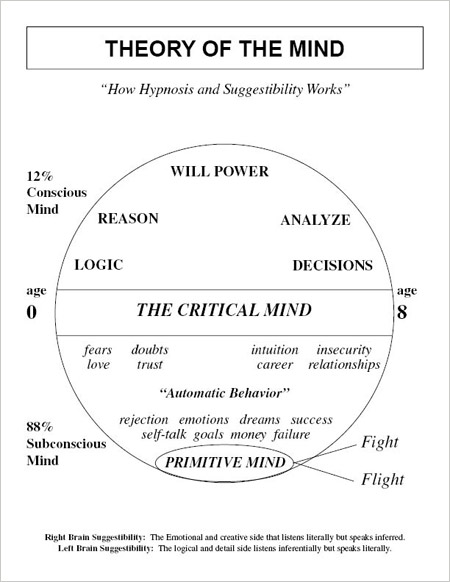
From the time we are born until about 8 years old, we are very suggestible. That just means that we take in everything as absolute truth. As children, we do not have the ability to analyze incoming information; we believe everything we are told. Most kids are walking around in hypnosis.
We learn likes and dislikes, what we are capable of, what we are not capable of, what is fearful, desirable, etc. This is the creation of our so called Life Script: a collection of beliefs and “knowns” that shape our behavior and thinking. This happens at the level of our subconscious mind, so we are not aware that it is occurring. We all fall under the hypnosis of our culture, and adopt the beliefs of our parents, religion and society.
Between 7 and 9 years old, we begin to develop the “critical mind” which blocks suggestions into our subconscious minds. We began to question incoming information, we began to ask why, and to seek to understand the information presented to us. At this point we begin to develop our conscious minds, which we use for decision making, reasoning, analyzing, and logic. We start to think for ourselves.
As you can see from the diagram, the subconscious mind makes up 88% of our total “mind power” according to some estimates. The conscious mind, only about 12%. The subconscious mind has a much greater influence on our behavior.
What brings people into my office is the realization that they have a problem that they cannot seem to solve on their own. For instance, they can’t quit smoking, or get rid of anxiety or get motivated.
The reason for this is that that their subconscious minds contain the programming that keeps them anxious, or procrastinating, or smoking, or overeating. This programming comes from childhood. For instance, in the case of smoking, someone may have seen their parents smoking, saw that they look relaxed when they were smoking, and maybe even saw commercials for smoking. (“Winston tastes good like a cigarette should”)
Their subconscious mind is familiar and comfortable with smoking, to the subconscious, it’s a “known”.
So even though they may want to quit smoking, the part that wants to quit is only 12 %: the conscious mind. But 88% wants to keep smoking. Which do you think will win out? Of course, the 88%.
Hypnosis as a tool for change.
This is where hypnosis comes in. When a person is in hypnosis, their critical mind, whose job is to be the gatekeeper to the subconscious mind, takes a break. They become very suggestible, or, open to suggestion.
So in a hypnotherapy session, I can use the power of suggestion to get the subconscious mind familiar with what the goal is, so that the goal now becomes a “known” to the subconscious mind. With enough repetition and reinforcement, by coming to a few sessions or listening to recordings that I make for my clients, they can begin to reprogram their minds to stop smoking, be more calm and relaxed, or be more motivated. See how that works?
I’ve attached a diagram, (courtesy of the Hypnosis Motivation Institute) this is what I use with every new client to explain how hypnosis and hypnotherapy works.
From the time we are born until about 8 years old, we are very suggestible. That just means that we take in everything as absolute truth. As children, we do not have the ability to analyze incoming information; we believe everything we are told. Most kids are walking around in hypnosis.
We learn likes and dislikes, what we are capable of, what we are not capable of, what is fearful, desirable, etc. This is the creation of our so called Life Script: a collection of beliefs and “knowns” that shape our behavior and thinking. This happens at the level of our subconscious mind, so we are not aware that it is occurring. We all fall under the hypnosis of our culture, and adopt the beliefs of our parents, religion and society.
Between 7 and 9 years old, we begin to develop the “critical mind” which blocks suggestions into our subconscious minds. We began to question incoming information, we began to ask why, and to seek to understand the information presented to us. At this point we begin to develop our conscious minds, which we use for decision making, reasoning, analyzing, and logic. We start to think for ourselves.
As you can see from the diagram, the subconscious mind makes up 88% of our total “mind power” according to some estimates. The conscious mind, only about 12%. The subconscious mind has a much greater influence on our behavior.
What brings people into my office is the realization that they have a problem that they cannot seem to solve on their own. For instance, they can’t quit smoking, or get rid of anxiety or get motivated.
The reason for this is that that their subconscious minds contain the programming that keeps them anxious, or procrastinating, or smoking, or overeating. This programming comes from childhood. For instance, in the case of smoking, someone may have seen their parents smoking, saw that they look relaxed when they were smoking, and maybe even saw commercials for smoking. (“Winston tastes good like a cigarette should”)
Their subconscious mind is familiar and comfortable with smoking, to the subconscious, it’s a “known”.
So even though they may want to quit smoking, the part that wants to quit is only 12 %: the conscious mind. But 88% wants to keep smoking. Which do you think will win out? Of course, the 88%.
Hypnosis as a tool for change.
This is where hypnosis comes in. When a person is in hypnosis, their critical mind, whose job is to be the gatekeeper to the subconscious mind, takes a break. They become very suggestible, or, open to suggestion.
So in a hypnotherapy session, I can use the power of suggestion to get the subconscious mind familiar with what the goal is, so that the goal now becomes a “known” to the subconscious mind. With enough repetition and reinforcement, by coming to a few sessions or listening to recordings that I make for my clients, they can begin to reprogram their minds to stop smoking, be more calm and relaxed, or be more motivated. See how that works?
Want to catch up on previous episodes? Click Here >
Ted had to overcome his own negative programming to enroll in hypnotherapy school and start a private practice. If you need to change your path, or if you are still looking for the right path for you, Ted’s been down that road and can offer support and the subconscious re-programming you need for success. Request a complimentary consultation so that you can get your questions answered and find out if hypnotherapy and high performance coaching is right for you. Go to http://TedMoreno.com/contact, send an email and Ted will get back to you within 48 hours.

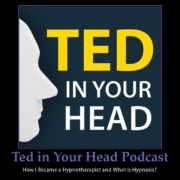

 Getting regular exercise is good for your body and good for your brain. It helps to release stress and tension, gives you a feeling of accomplishment, and gives you greater energy. Getting regular exercise will help you to have more energy, be happier, more focused and effective, less stressed, more confident, look better and live longer.
Getting regular exercise is good for your body and good for your brain. It helps to release stress and tension, gives you a feeling of accomplishment, and gives you greater energy. Getting regular exercise will help you to have more energy, be happier, more focused and effective, less stressed, more confident, look better and live longer.
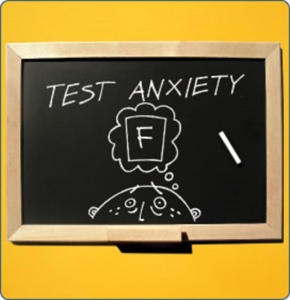 According to the American Test Anxiety Association, 38 percent of students have high or moderately high test anxiety. Test anxiety is where the test taker feels severe distress before, during and after the test. Test anxiety can not only interfere with information recall but may also cause some people to give up taking the text entirely or to keep putting it off, even though their career success depends on it. In this episode, Ted discusses test anxiety and offers 7 valuable tips for preparing for tests and taking tests while remaining calm, in control and able to recall the information needed to pass. It’s test time, so if you know someone who can benefit from listening to this podcast, please pass this along to them.
According to the American Test Anxiety Association, 38 percent of students have high or moderately high test anxiety. Test anxiety is where the test taker feels severe distress before, during and after the test. Test anxiety can not only interfere with information recall but may also cause some people to give up taking the text entirely or to keep putting it off, even though their career success depends on it. In this episode, Ted discusses test anxiety and offers 7 valuable tips for preparing for tests and taking tests while remaining calm, in control and able to recall the information needed to pass. It’s test time, so if you know someone who can benefit from listening to this podcast, please pass this along to them.
 Walking. So simple and so easy. Humans and their ancestors have been doing it for a million years. We are meant to walk. Our bodies are designed for upright, bipedal locomotion. Walking is a complex behavior that exercises our brains as well as our skeletal system. It is a harmonious integration of various body systems including the inner ear, eyes, touch receptors, muscles, tendons, and joints. The good news is that walking is really good for you and many physicians consider it the best form of exercise. In this episode, Ted, a dedicated walker, shares the top 10 reasons why starting a habit of daily walking can change you life. Are you trying to get some exercise but don’t want to go to a gym or walk on a boring treadmill? Check out this episode of the Ted in Your Head podcast.
Walking. So simple and so easy. Humans and their ancestors have been doing it for a million years. We are meant to walk. Our bodies are designed for upright, bipedal locomotion. Walking is a complex behavior that exercises our brains as well as our skeletal system. It is a harmonious integration of various body systems including the inner ear, eyes, touch receptors, muscles, tendons, and joints. The good news is that walking is really good for you and many physicians consider it the best form of exercise. In this episode, Ted, a dedicated walker, shares the top 10 reasons why starting a habit of daily walking can change you life. Are you trying to get some exercise but don’t want to go to a gym or walk on a boring treadmill? Check out this episode of the Ted in Your Head podcast.
 Anticipatory anxiety is the anxiety we experience in anticipation of doing things that frighten us. Call it the fear of being afraid. If we perceive something will be fearful for us, or if we have found that situation fearful in the past, we can become so unwilling to go through that fear again that we start making ourselves afraid or anxious even before anything’s happened. Anticipatory anxiety can shut us down and stop us cold. So, what can we do to keep anticipatory anxiety at bay? In this episode, Ted talks about how to stop creating fear and anxiety for yourself about something that has not happened. If you have driving anxiety, social anxiety or any kind of anxiety, check out this episode.
Anticipatory anxiety is the anxiety we experience in anticipation of doing things that frighten us. Call it the fear of being afraid. If we perceive something will be fearful for us, or if we have found that situation fearful in the past, we can become so unwilling to go through that fear again that we start making ourselves afraid or anxious even before anything’s happened. Anticipatory anxiety can shut us down and stop us cold. So, what can we do to keep anticipatory anxiety at bay? In this episode, Ted talks about how to stop creating fear and anxiety for yourself about something that has not happened. If you have driving anxiety, social anxiety or any kind of anxiety, check out this episode.
 Scarcity consciousness or a “lack” mentality is often the result of childhood programming and decisions that we make subconsciously. To shift into an abundance mindset requires an awareness of this programming and taking steps to counteract it and create a new way of looking at prosperity. In this episode, Ted shares his experience with having years of scarcity consciousness and how he managed to break out of it. He discusses the 7 steps he took to make it happen. If he can do it, you so can you.
Scarcity consciousness or a “lack” mentality is often the result of childhood programming and decisions that we make subconsciously. To shift into an abundance mindset requires an awareness of this programming and taking steps to counteract it and create a new way of looking at prosperity. In this episode, Ted shares his experience with having years of scarcity consciousness and how he managed to break out of it. He discusses the 7 steps he took to make it happen. If he can do it, you so can you.
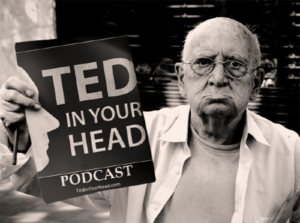 There comes a point, somewhere in your late 40’s or early 50’s, where you look in the mirror and I becomes clear to you that you are not a kid anymore. What happened? Life happened the way it should. The only powerful choice we can make in the face of aging is to accept our ongoing journey with grace and dignity. If we can do that, we will find what it takes to continue growing, exploring and living in a way that is always inspiring.
There comes a point, somewhere in your late 40’s or early 50’s, where you look in the mirror and I becomes clear to you that you are not a kid anymore. What happened? Life happened the way it should. The only powerful choice we can make in the face of aging is to accept our ongoing journey with grace and dignity. If we can do that, we will find what it takes to continue growing, exploring and living in a way that is always inspiring.
 Have you ever been in a funk? You know: unmotivated, lethargic, something’s off, feeling deflated, sad and not right? We all have, and it’s not fun, so we want to get out of the funk as soon as possible.
Have you ever been in a funk? You know: unmotivated, lethargic, something’s off, feeling deflated, sad and not right? We all have, and it’s not fun, so we want to get out of the funk as soon as possible.
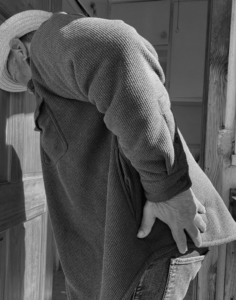 Chronic pain and anxiety have a strong relationship to each other. Anxiety can cause or increase pain and pain can cause anxiety. This can cause a “negative feedback loop” making life increasingly unbearable for those that suffer from pain and anxiety.
Chronic pain and anxiety have a strong relationship to each other. Anxiety can cause or increase pain and pain can cause anxiety. This can cause a “negative feedback loop” making life increasingly unbearable for those that suffer from pain and anxiety.
 I was speaking with a client last night and I told him the following story. It’s a great story, so I thought I would share it with you.
I was speaking with a client last night and I told him the following story. It’s a great story, so I thought I would share it with you.